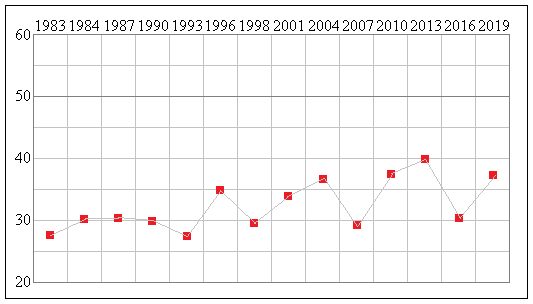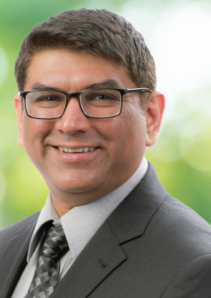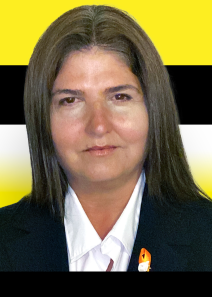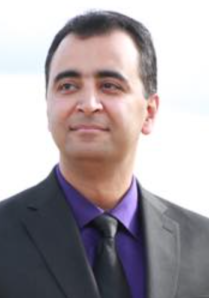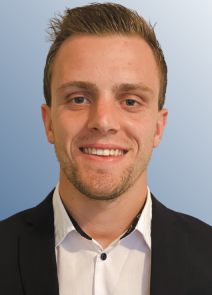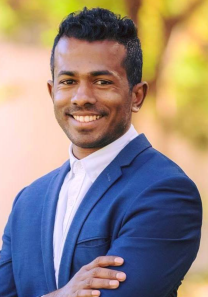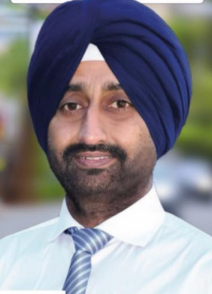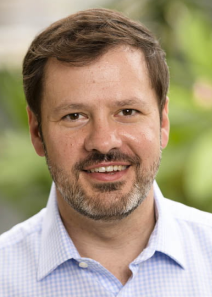|
Chifley was created in 1969, in Sydney's fast-growing and heavily working-class western suburbs, based on Blacktown.
Its character has not changed much since its creation: it has one of the lowest proportion of people in professional
and managerial occupations of any electorate in Australia, nearly half (47.3%) of its population live in non English
speaking households, and it has the highest proportion (4%) of Indigenous people of any urban electorate.* All these
factors make Chifley a safe seat for the Labor Party.
As with several other safe Labor seats in western Sydney, Chifley has been held mainly by backbenchers distinguished more
for loyalty than for ability.
Roger Price won the seat in 1984, and was a parliamentary secretary in the Hawke and
Keating governments, and later Labor Chief Whip. He retired in 2010.
Ed Husic, Labor MP for Chifley since 2010, was national president of the Communications, Electrical and Plumbing Union
before his election. He was the Labor candidate for Greenway in 2014, and was subjected to an anonymous smear campaign
based on the fact that he is a Muslim - he is the son of Bosnian immigrants, and was the first Muslim to be a member of
the Australian Parliament. He was a parliamentary secretary in the last months of the Rudd-Gillard Government.
He is now Shadow Minister for Industry and Innovation.
* Blacktown was originally called Blacks Town and was the site of an internment camp and school for Sydney-area Aboriginal people.
Demographics:
Median weekly household income: $1,477 (Australia $1,438)
People over 65: 10.9% (Australia 15.8%)
Indigenous: 4.0% (Australia 2.8%)
Australian born: 52.5% (Australia 66.7%)
Ancestry: Filipino 9.4%, Indian 7.2%
Non-English-speaking households: 47.3% (Australia 22.2%)
Catholics 30.3% (Australia 22.6%)
Muslim 8.3%
No religion 14.4% (Australia 29.6%)
University graduates: 17.8% (Australia 22.0%)
Professional and managerial employment: 22.3% (Australia 35.2%)
Employed in manufacturing and construction: 24.2% (Australia 22.9%)
Paying a mortgage: 37.5% (Australia 34.5%)
Renting: 37.0% (Australia 30.9%)
Traditional families: 45.7% (Australia 32.8%)

Gallery of Members for Chifley
Boundaries following most recent redistribution:
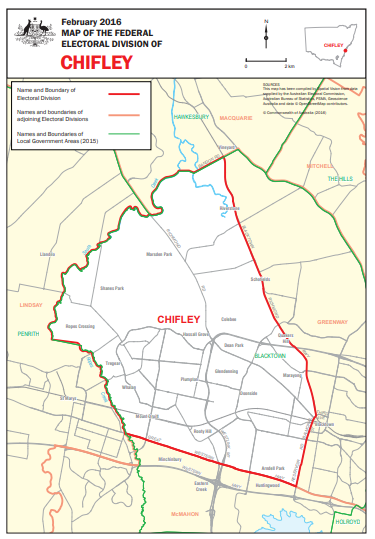
See full-size map of this Division
People over 65: 10.9% (Australia 15.8%)
Indigenous: 4.0% (Australia 2.8%)
Australian born: 52.5% (Australia 66.7%)
Ancestry: Filipino 9.4%, Indian 7.2%
Non-English-speaking households: 47.3% (Australia 22.2%)
Catholics 30.3% (Australia 22.6%)
Muslim 8.3%
No religion 14.4% (Australia 29.6%)
University graduates: 17.8% (Australia 22.0%)
Professional and managerial employment: 22.3% (Australia 35.2%)
Employed in manufacturing and construction: 24.2% (Australia 22.9%)
Paying a mortgage: 37.5% (Australia 34.5%)
Renting: 37.0% (Australia 30.9%)
Traditional families: 45.7% (Australia 32.8%)
